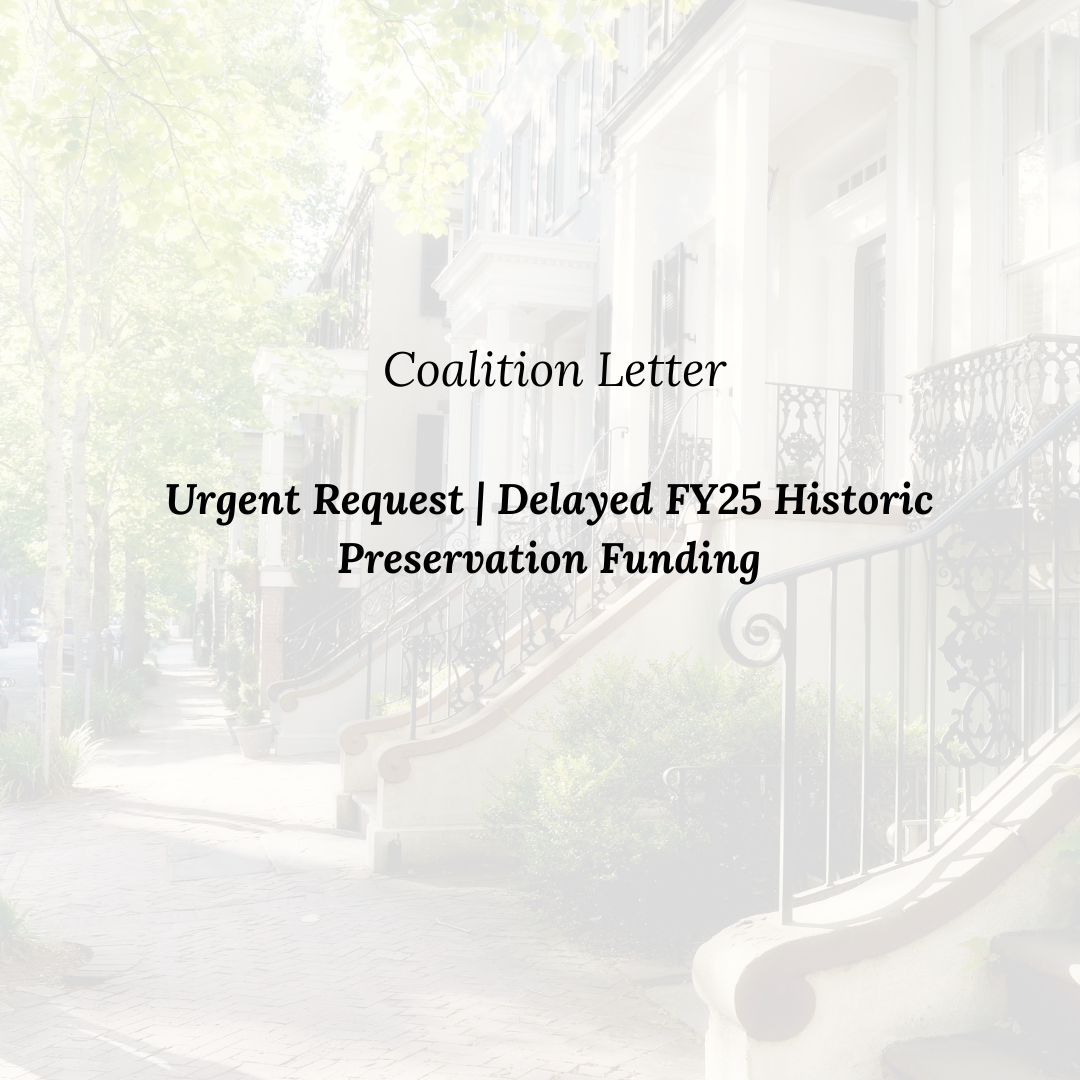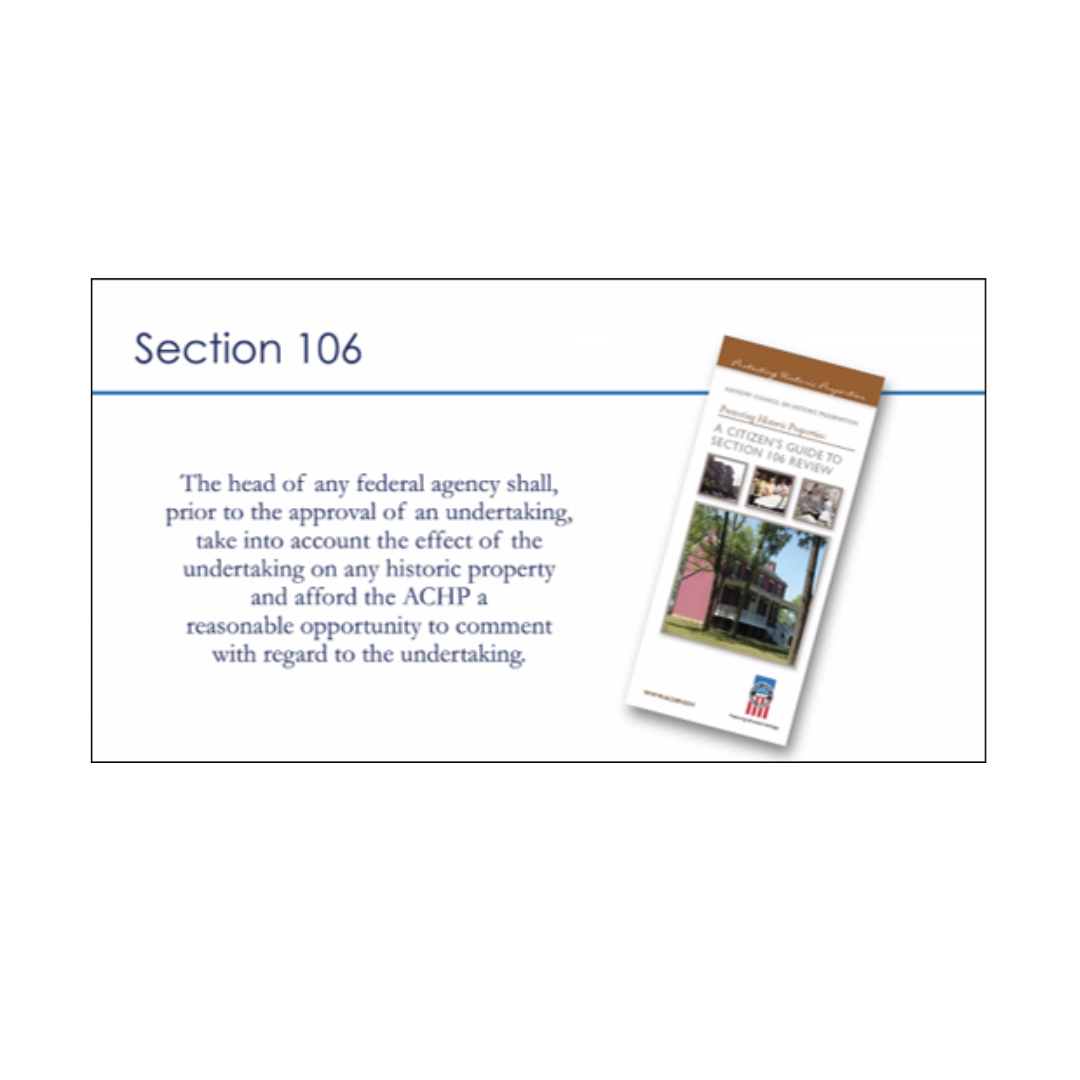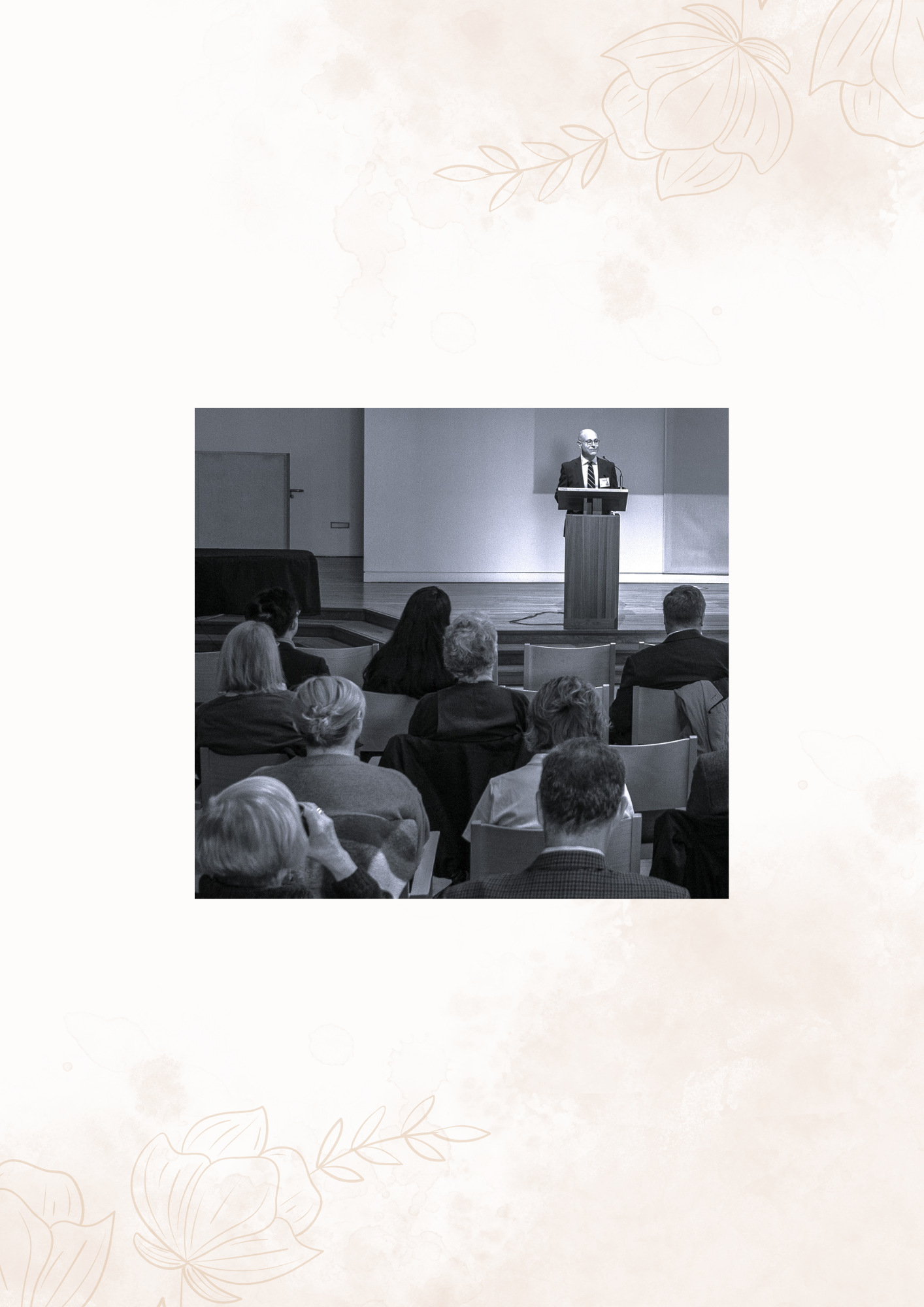12.15.2024 NCSHPO submits:
- Comment Letter (2nd round)
- Draft mark up
- Letter from Counsel
Update 11.15.2024 ACHP shares revised Program Comment draft now titled: Certain Housing, Buildings, and Transportation Activities and will accept comments through December 15th, 2024.
The Advisory Council’s proposed Program Comment on Accessible, Climate-Resilient & Connected Communities is top of mind for a variety of professionals in the field of historic preservation.
What is the Response from the Historic Preservation Community?
1st Comment Period CLOSED Oct 9, 2024
- American Anthropological Association Archaeology Division
- American Cultural Resources Association
- Cowlitz Indian Tribe
- Municipal Art Society of NY
- National Alliance of Preservation Commissions
- National Association of Tribal Historic Preservation Officers
- New York Preservation Colleagues
- Preservation Action
- Preservation Alliance of Baltimore County
- Snoqualmie Indian Tribe
- Society for American Archaeology
- Society for California Archaeology
- Society for Historical Archaeology
- U.S. Department of the Interior
comment letters are listed with permission or otherwise publicly available. For inclusion in this list, submit your comment letter to info@ncshpo.org
The National Conference of State Historic Preservation Officers has a long history of working productively with both federal agencies and the Advisory Council on Historic Preservation to develop programmatic solutions for the Section 106 review of large-scale, repetitive or pressing policy and preservation issues. These solutions, however, have been driven by agency request and clear program or policy parameters.
In recent years, the ACHP has approved various Program Comments, as one of their “program alternatives” available to federal agencies by regulation as an alternative to traditional Section 106 public consultation and has done so at an increased pace. Historically, Program Comments were very niche in nature, requested by agencies as true streamlining opportunities, and typically limited to preservation-minded approaches or narrow types of agency undertakings that were not harmful to preservation efforts.
While citing a need for “streamlining” and “efficiency,” broader and less preservation-minded Program Comments have been more recently presented to the Council for action. Most of these have largely failed to take a balanced approach for historic preservation and in fact have served to wholly eliminate the opportunity for citizens and State Historic Preservation Officers to be involved in federal undertakings. We have strongly objected to these Program Comments for failing to protect the public’s access to its own government through the Section 106 decision-making process.
At this time, the current ACHP chair is proposing a Program Comment at her own initiation that we observe is not agency driven and designed to eliminate consultation and public access to the decision-making process not for a specific program or agency, but for virtually any federally funded, permitted, or licensed housing or energy-efficiency project.
While we also seek to address both housing and energy-efficiency goals, we are concerned that this proposal exhibits multiple inadequacies in its structure and regulatory scope, excludes the public, and undercuts the fundamental consultation requirements of the National Historic Preservation Act.
We stand ready to help the ACHP fulfill the Act’s policy goals for the Federal Government, namely to “use measures…to foster conditions under which our modern society and our historic property can exist in productive harmony and fulfill the social, economic, and other requirements of present and future generations”1.
To this end, we have identified the following broad key issues below to aid the ACHP in finding a path forward to address these issues in harmony with historic preservation, and working collaboratively on an approach that is prudent, pragmatic and inclusive.
NCSHPOs (10) Observations
- The proposed Program Comment should seek to harmonize, not subvert historic preservation, with other policy goals. In the National Historic Preservation Act, Congress declares: “The historical and cultural foundations of the Nation should be preserved as a living part of our community life and development in order to give a sense of orientation to the American people.”2 Every federal Administration has its own policy goals, and sometimes, as with housing and climate impacts, they are indeed urgent. But the goal of the Advisory Council should be to find ways to harmonize historic preservation with larger societal needs, not to create pathways to bypass the protection of our historic properties in favor of other policy goals.
- The proposed Program Comment should retain public consultation requirements. As the Program Comment is currently written, we are concerned that the elimination of public and state consultation subverts the fundamental intent and policies of the National Historic Preservation Act. Consultation at the state and local level is a fundamental pillar of the way Americans practice historic preservation. Good preservation practice requires a diversity of perspectives and opinions from citizen stakeholders who have unique knowledge and relationships with their local historic resources. This proposal would remove statutory public consultation by administrative fiat and, in so doing, the public’s access to its government by instead substituting a federal agency’s sole and veiled judgment.
- The proposed Program Comment, by eliminating public consultation, will lead to negative outcomes and longer timelines. While consultation is often villainized as “the thing that slows us down”, the fact is that honest, considered consultation with citizens at the state and local level at the very beginning of federal project planning greatly decreases time-consuming, foreseeable conflicts down the road. A lack of careful, informed planning may lead to faster decisions – but the impacts to our historic communities may last forever.
- The proposed Program Comment as currently drafted will add confusion to the Section 106 process and undermine established relationships. State Historic Preservation Officers as public servants have worked tirelessly since the passage of the Act on behalf of all Americans to craft streamlining agreements with Federal agencies at the state level, tailored to the needs and unique aspects of the States. These agreements are built upon strong relationships and deliberate consultation at the state and local level. Allowing a hurried Program Comment without the necessary broad public input, broadly scoped and lacking specifics, to supersede these agreements would introduce confusion and lead to inconsistent processes, compliance, and outcomes.
- The proposed Program Comment conflicts with local preservation ordinances and will frustrate project reviews. While the Program Comment is focused on the Section 106 process, many projects will still need to comply with requirements of local preservation ordinances. As currently drafted, this Program Comment may set up a situation where two different preservation standards could apply to different aspects of a project – leading to confusion, more complex project reviews, and inconsistent outcomes.
- The proposed Program Comment conflicts with the Secretary of the Interior’s Standards for rehabilitation tax credit programs. Again, while the Program Comment is designed to apply to the Section 106 process, an unanticipated consequence may arise with the use by a constituent of a federal housing grant for a historic tax credit project in that the requirements of one will be stricter than the other. Which prevails, and will constituents unwittingly act to deny themselves access to the crucial historic tax credit program’s incentives?
- The proposed Program Comment should have more precise definitions and a more focused scope. As currently drafted, its broad scope and vaguely defined exemptions give unprecedented latitude to all Federal agencies and is contrary to the requirements of the National Historic Preservation Act. Precise definitions and a focused scope are important for any Program Alternative, but for a Program Comment with such far-reaching ramifications, they are crucial. Without these elements, Federal agencies are given free rein to unilaterally interpret guidelines to fit their individual policy goals and to circumvent Section 106 requirements, inviting adverse effects. Further, by applying to all federal agencies, it does not consider each agency’s varying resources and capabilities.
- The proposed Program Comment should have broader reporting obligations and better – defined qualification standards. It is essential that all decisions related to Section 106 be made by qualified preservation professionals, with regular reporting accessible to all as a matter of transparency and accountability. This need becomes even more important within the opaque environment of a Program Comment. By failing to require detailed annual reporting for the life of the document, with qualified professionals participating in all aspects of the process, this Program Comment will likely enable the possibility of abuse by Federal agencies with few avenues for recourse by citizens.
- The proposed Program Comment should support its stated justifications with verifiable data. Justifications offered for any Program Comment should be supported by data that is appropriately cited and can be confirmed by citizen stakeholders. Without studies to back up claims of reducing taxpayer costs and expediting project delivery, or numbers to support the suggestion that similar Program Comments have aided climate efficiency while facilitating preservation, such justifications are simply opinions stated as fact. As written, the draft offers conclusions without measurable data or justifications.
- The proposed Program Comment fails to offer any mitigation for adverse effects to historic properties. Fundamental to the Section 106 consultation process is the identification of and mitigation for adverse effects to historic properties. This proposal essentially exempts a huge number of undertakings from Section 106, acknowledges adverse effects to the irreplaceable historic places in American communities, and contrary to the Act, offers absolutely no alternative solutions or mitigation for the harm it may cause.
1 54 USC 300101(1). Emphasis supplied.
2 Section 1 of the National Historic Preservation Act, Pub. L. No. 89-665, as amended by Pub. L. No. 96-515.





